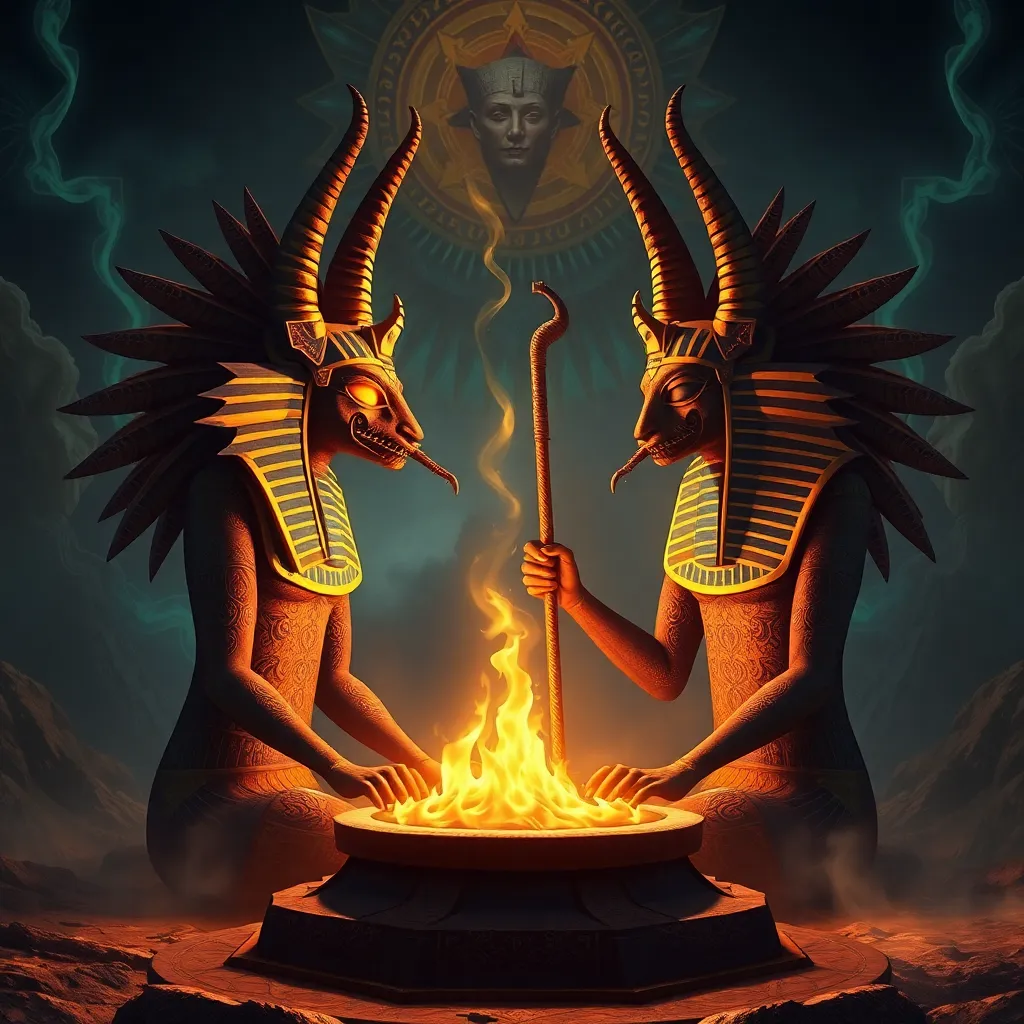From Hero to Monster: Exploring the Origins and Evolution of the Cerberus Myth
I. Introduction
Cerberus, the three-headed dog of Greek mythology, is one of the most iconic figures associated with the Underworld. Known as the guardian of Hades, Cerberus has fascinated scholars, artists, and enthusiasts alike for centuries. The significance of this mythological creature stretches far beyond its fearsome appearance; it reflects the complex relationship between life and death, the known and the unknown.
This article aims to trace the evolution of Cerberus from a figure of heroism and loyalty to one that embodies monstrosity and fear. By examining ancient texts, cultural shifts, artistic representations, and symbolic interpretations, we will uncover the layers of meaning surrounding this enigmatic creature.
II. The Origins of Cerberus in Ancient Texts
The earliest references to Cerberus can be found in ancient Greek literature, where he is depicted as the fierce guardian of the Underworld, preventing the souls of the dead from escaping. His roots can be traced back to Homeric epics and the works of Hesiod, where he is described with various attributes that emphasize his role as a protector.
- Homeric Epics: In the “Iliad” and the “Odyssey,” Cerberus is mentioned briefly, showcasing his fearsome reputation.
- Hesiod’s Works: Hesiod elaborates on Cerberus’s lineage, claiming he is the offspring of Echidna and Typhon, reinforcing his monstrous nature.
Cerberus symbolizes the inevitability of death and the importance of boundaries between the worlds of the living and the dead. As a guardian, he embodies the fear and reverence ancient cultures felt towards the unknown realms of the afterlife.
III. Cerberus as a Heroic Figure
In many myths, Cerberus is portrayed not merely as a monster but as a creature of strength and loyalty, especially in the context of the Labors of Heracles. His role in this narrative highlights a different aspect of his character.
- Labors of Heracles: One of Heracles’s most famous tasks was to capture Cerberus from the Underworld, showcasing Cerberus’s strength and Heracles’s heroism.
- Portrayal of Loyalty: Despite his ferocity, Cerberus is depicted as loyal to Hades, reflecting the dual nature of guardianship—protective yet fearsome.
In these narratives, Cerberus interacts with various heroes and mortals, often serving as a test of their strength and resolve. This relationship illustrates the complexity of heroism and the blurred lines between friend and foe.
IV. The Transformation into a Monster
As myths evolved, so did the perception of Cerberus. In later narratives, he began to be viewed more as a monster than a noble guardian.
- Shift in Perception: The transition from guardian to monster is influenced by the changing nature of storytelling, where fear began to overshadow loyalty.
- Cultural Influences: The rise of Roman literature and adaptations further cemented Cerberus’s status as a monstrous figure, often used to evoke fear and illustrate the dangers of the Underworld.
This transformation reflects broader cultural shifts, where the fear of death and the afterlife became more pronounced, leading to a more sinister interpretation of Cerberus.
V. Cerberus in Art and Literature
Cerberus’s image has been depicted in various forms of art and literature throughout history, showcasing the evolution of his representation.
- Ancient Art: In classical sculpture and pottery, Cerberus is often shown as a fearsome beast, reinforcing his role as a guardian.
- Renaissance and Modern Literature: The image of Cerberus evolved during the Renaissance, where artists and writers began to explore the creature’s deeper symbolic meanings.
- Contemporary Pop Culture: Today, Cerberus appears in films, video games, and literature, often as a symbol of the dark and the unknown, reflecting the ongoing fascination with this mythological figure.
VI. Symbolic Interpretations of Cerberus
Cerberus represents more than just a mythical creature; he embodies complex themes that resonate through art and literature.
- Fear and the Unknown: Cerberus symbolizes humanity’s fear of death and the afterlife, acting as a reminder of mortality.
- Psychological Interpretations: In literature and art, Cerberus can be seen as a manifestation of inner fears and anxieties, exploring the duality of life and death.
- Themes of Death and Fate: Cerberus’s role in guarding the Underworld highlights themes of fate and the inevitability of death.
VII. Comparative Myths: Cerberus and Other Mythical Beasts
Examining Cerberus in the context of other mythical figures reveals common themes and archetypes present in world mythology.
- Similarities with Other Guardians: Cerberus shares characteristics with figures like Fenrir from Norse mythology and Yama-uba from Japanese folklore, all serving as guardians of the afterlife.
- Cross-Cultural Analysis: These comparisons highlight the universal themes of guardianship and the fear of monstrosity found in various cultures.
Understanding these similarities enriches our comprehension of Cerberus’s role in mythology and the cultural narratives surrounding death and the afterlife.
VIII. Conclusion
The journey of Cerberus from a heroic guardian to a monstrous figure reflects the complexities of human emotions towards death and the afterlife. This article has explored the origins of the Cerberus myth, his portrayal in literature and art, and the symbolic interpretations associated with him.
The enduring legacy of Cerberus in modern culture serves as a testament to the duality of heroism and monstrosity in mythology. As we continue to engage with these ancient narratives, Cerberus remains a powerful symbol that invites reflection on our fears, our mortality, and the boundaries between life and death.



